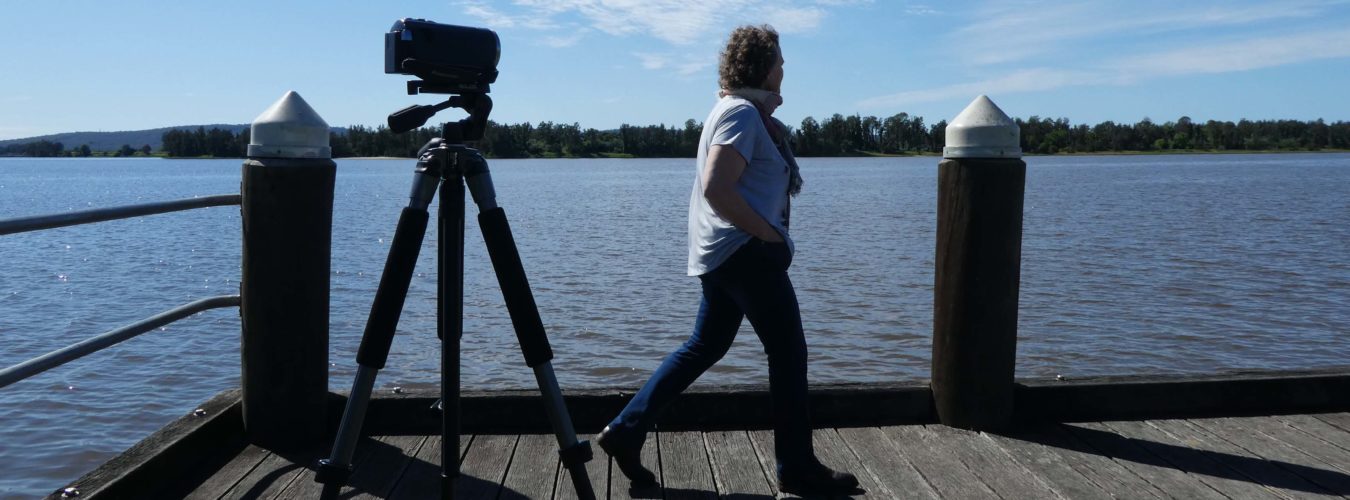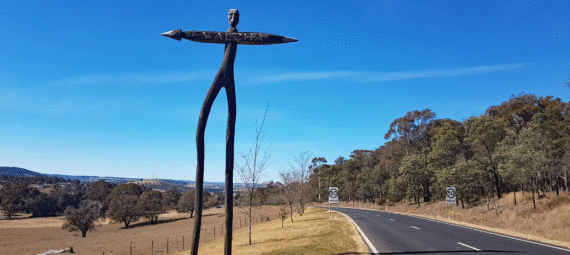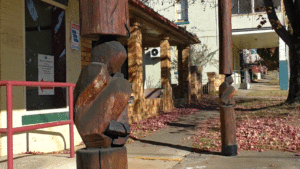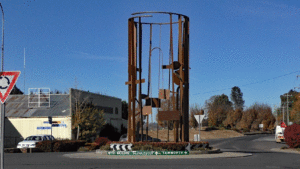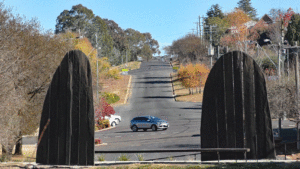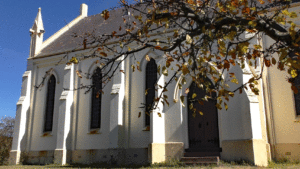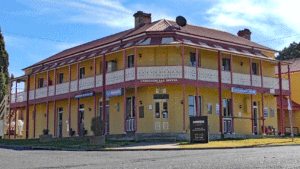What we loved
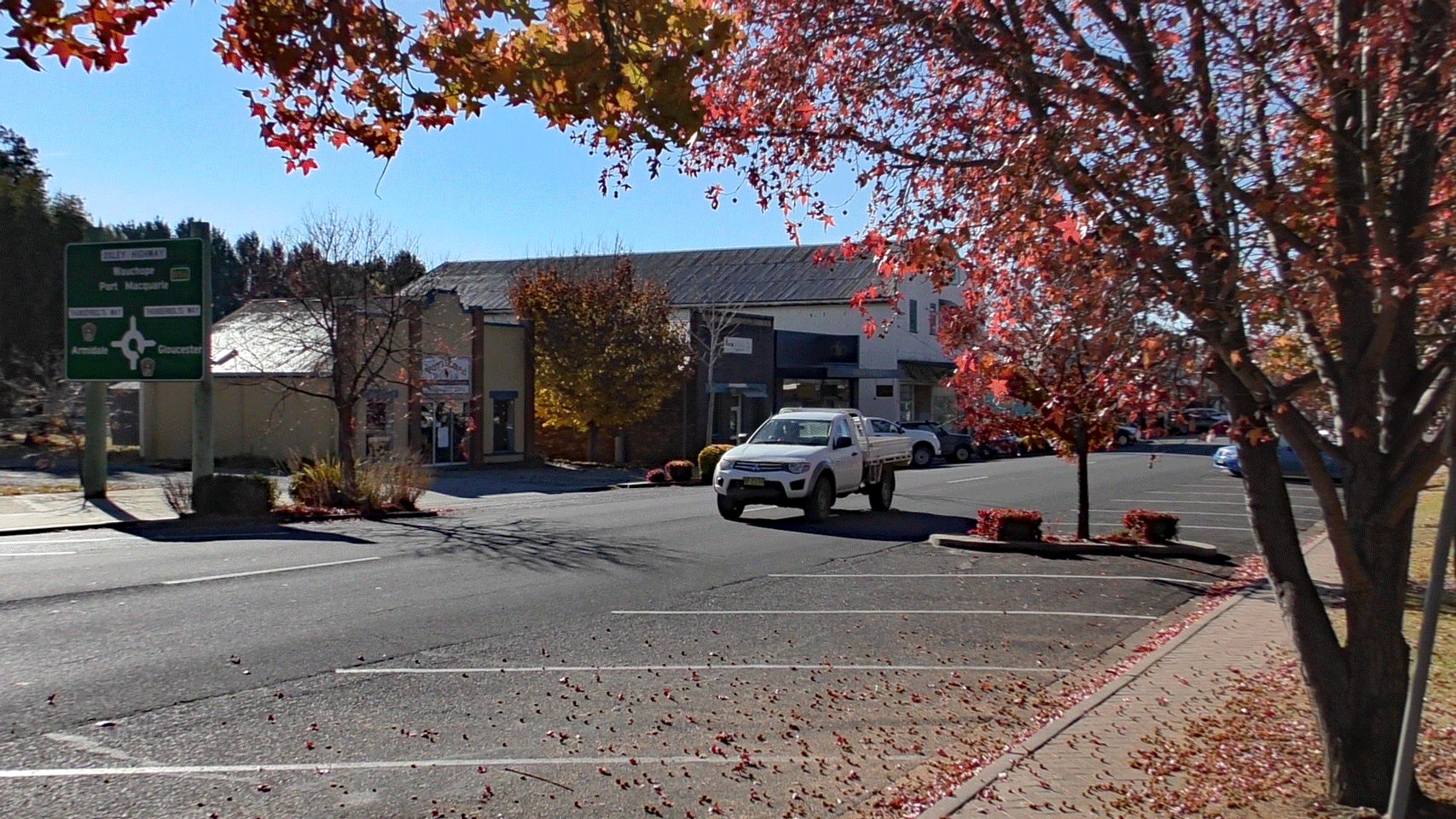
There was no ignoring the long dry spell that had engulfed much of the New England Tablelands when I drove into Walcha. The rolling hills were brown and dry, and yet, for all that, this historic old town had great appeal. Its wide streets were lined with autumn colour and pretty old buildings. Folk were out and about in the main street, shopping and chatting. People were enjoying a coffee or a meal in the local cafes. I daresay Walcha – the oldest town and first settlement of the tablelands – has seen plenty of dry spells in the past and will outlast this one too. Fingers crossed they’ll get some rain soon.
What we did
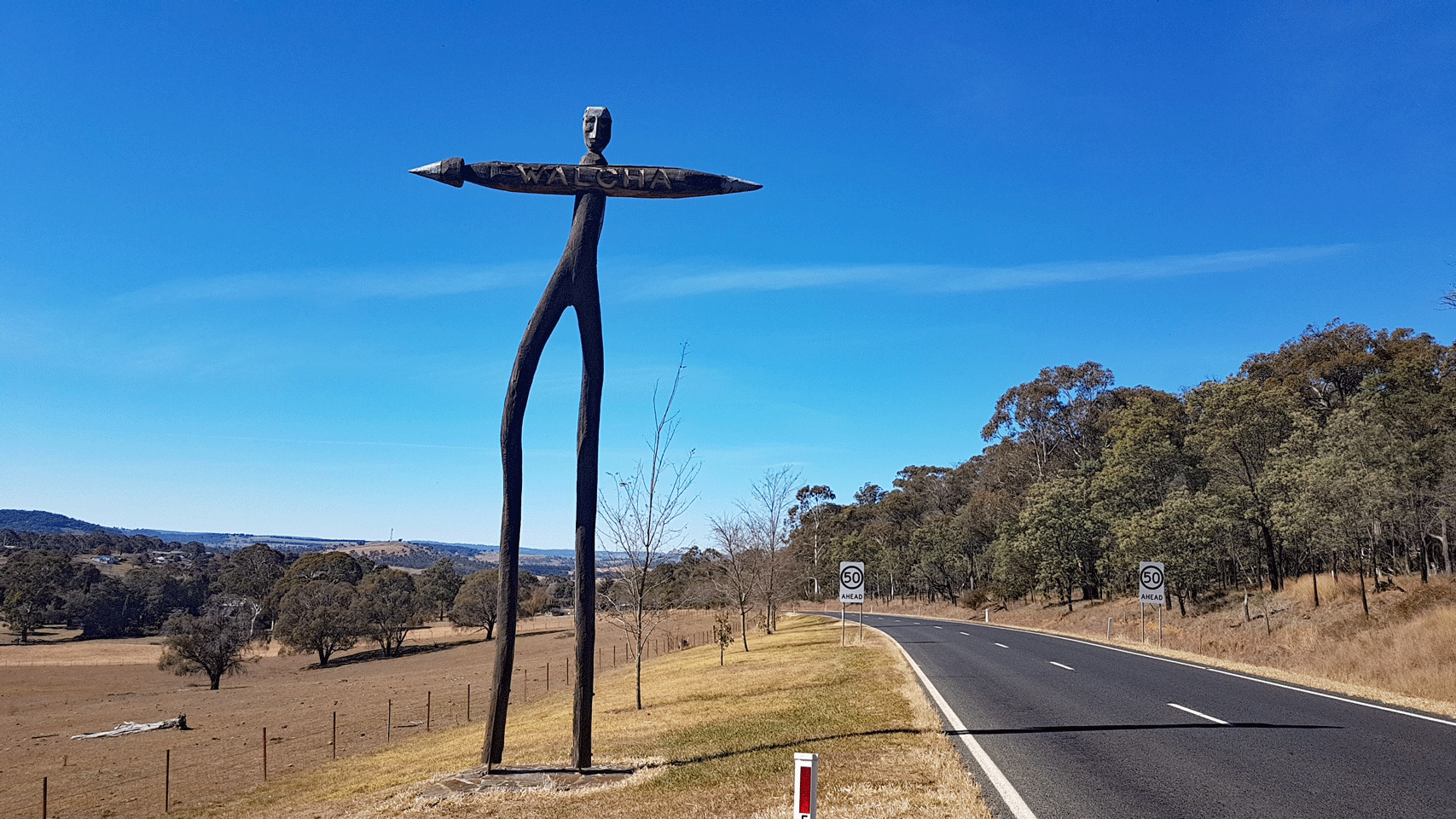
Sculpture trail
When I read that Walcha had the most public art per head of population in Australia, my fate was sealed. I was going to have to investigate this unexpectedly quirky claim to fame. At the centre of this town’s arty reputation is an open air gallery of around 50 sculptures – about one for every 60 residents.
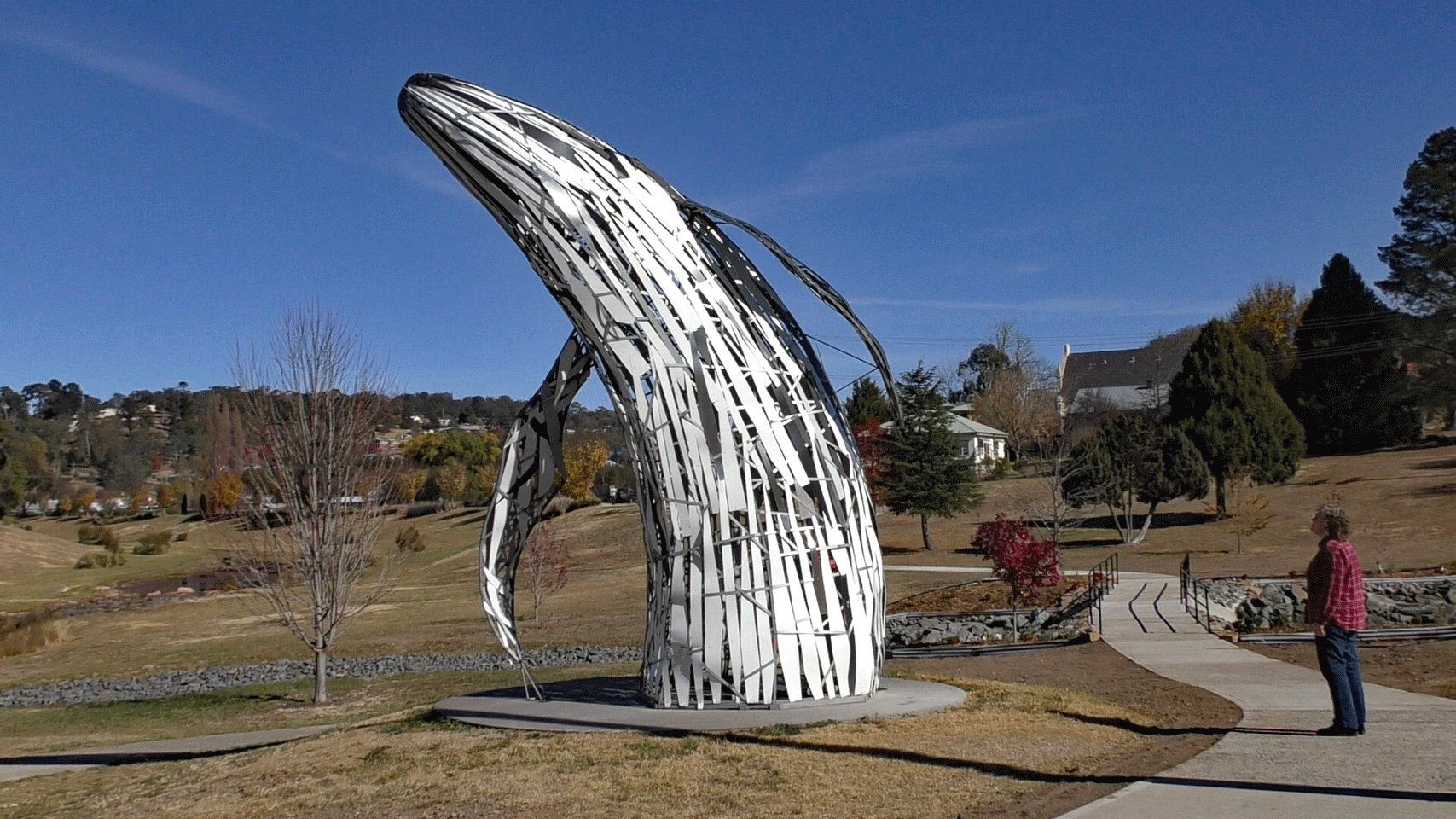
Eye catching creations mark each of the four main entries to the town, others are dotted around parks and still more are entwined into the streetscape as verandah posts and public seats. It’s quite wonderful and you can pick up a sculpture map at the visitor’s centre and go on a hunt for the town’s artistic treasures – which is exactly what I did.
Historic buildings
If you’ve an interest in things historical, you won’t leave Walcha brokenhearted. The visitor’s centre can provide you with a map to identify points of interest. Historic churches dating back to the mid 1800s, a collection of pubs built in a variety of eras and styles.
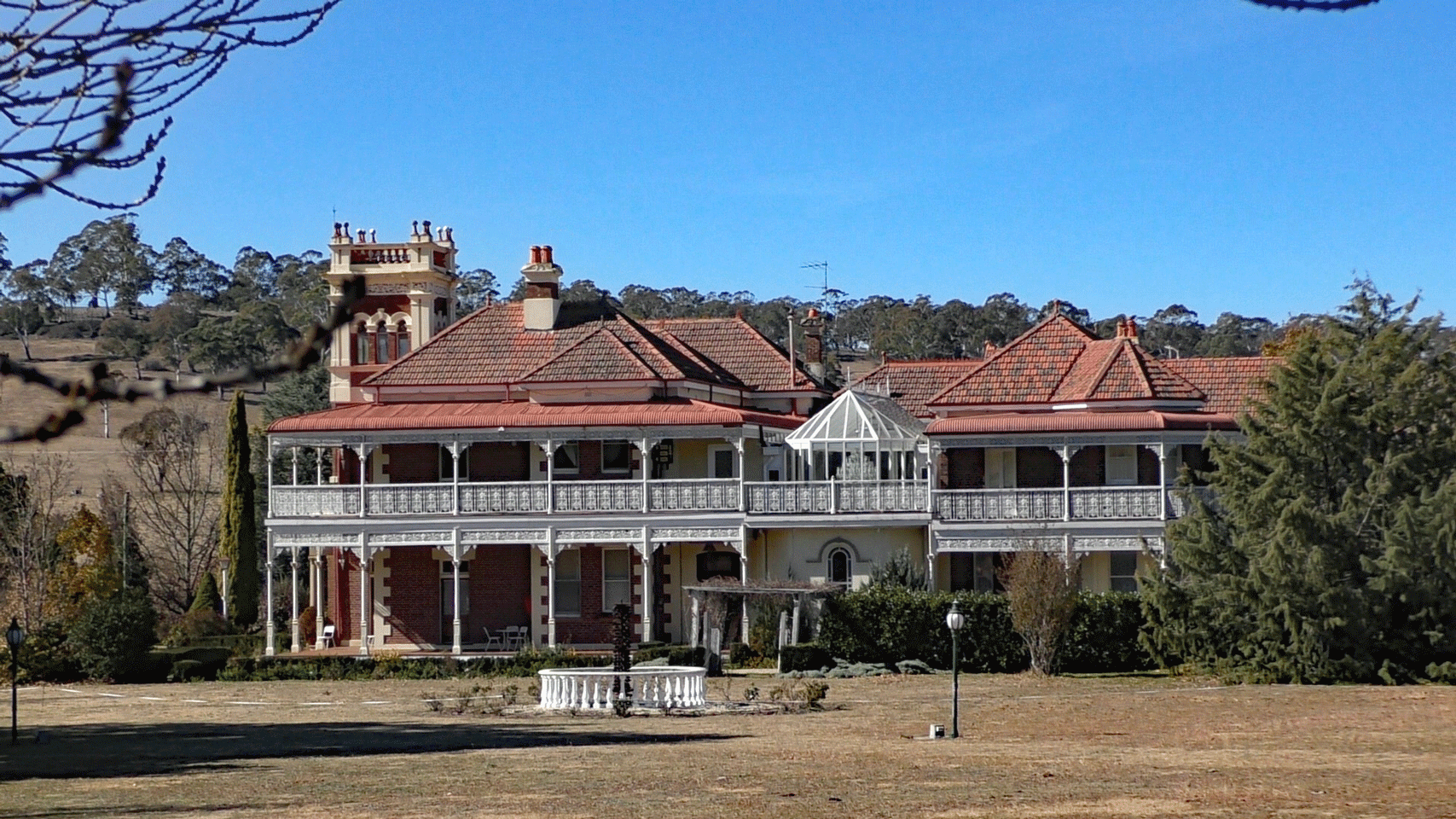
Quaint cottages and grand residences – and none so grand as the turn of the century mansion, Langford on the road to Gloucester. It’s built on the original location of explorer John Oxley’s 1818 camp site when he turned up to “discover” the area. It’s a real beauty featuring 22 rooms and a five story central tower, built for pastoralist W. Fletcher.
Wild rivers, fabulous falls
Walcha is just a short drive from Oxley Wild Rivers National Park. This spectacular park is part of the Gondwana Rainforests of Australia World Heritage Area – breathtaking, wild and crossed by deep rugged gorges of incredible beauty. As luck would have it though, on the occasion of my visit, the long dry spell had taken it’s toll on at least one of these rivers. In the past the Aspley River has been so wild at times as to require the building of levee banks to protect Walcha, but it was down to a series of waterholes. This meant that Aspley Falls – one of the district’s best known natural landmarks 20 kms away – was also not flowing.
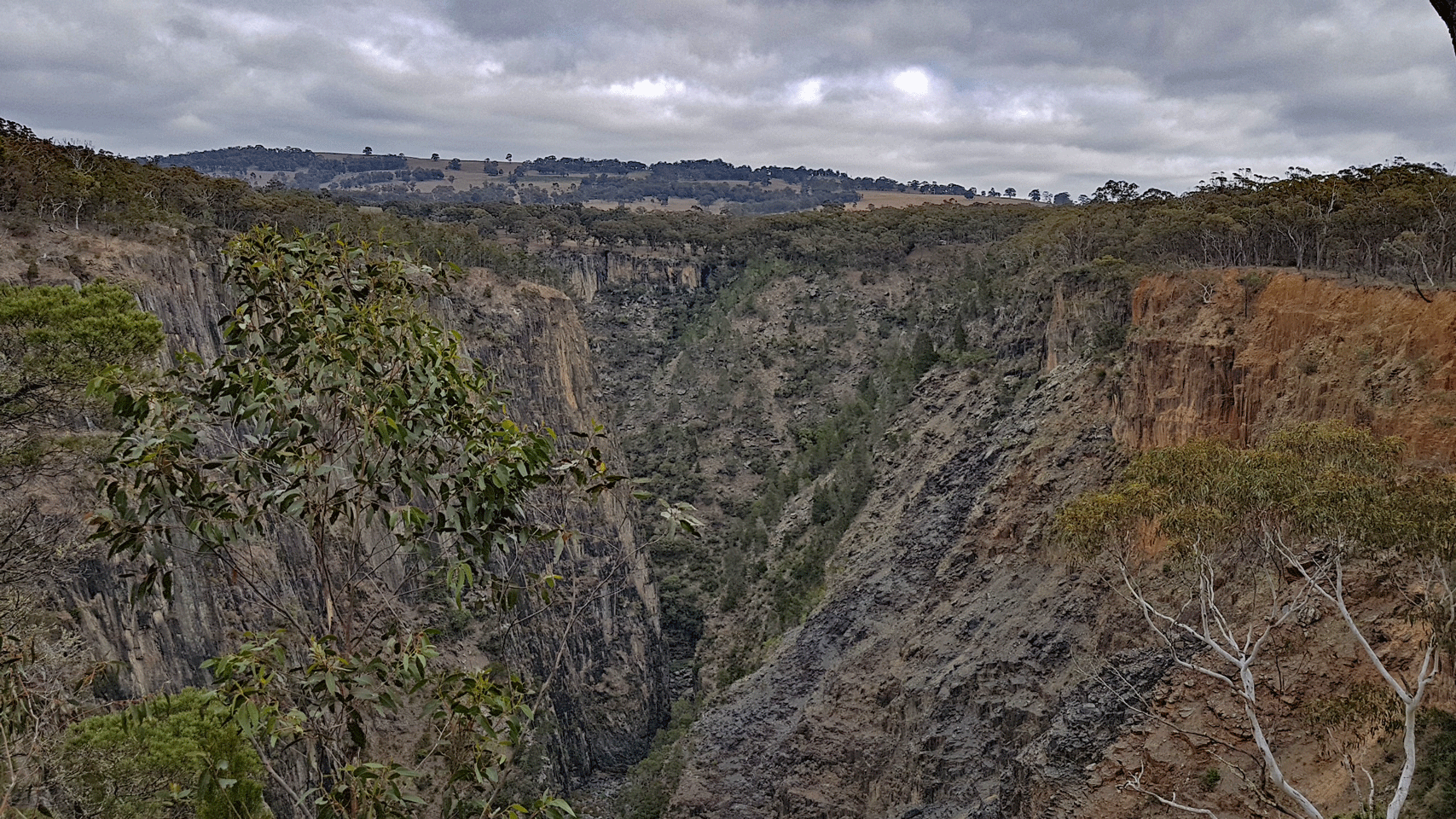
I’d been forewarned of this problem by the staff at the visitor’s centre and on their advice, took a scenic drive via Brackendale Road and Tia Diggings Road to start my waterfall pilgrimage at the more reliable Tia Falls. The Tia river has its headwaters further south at Mummel Gulf National Park and Riamukka State Forest where the rainfall is higher and swamps hold water in the landscape. Tia River, therefore, is one of the most reliable water sources in Oxley Wild Rivers National Park. It was flowing strongly while all around it was gripped by drought. There is an easy walk down to viewing platforms and picnic tables and toilets if you need them.
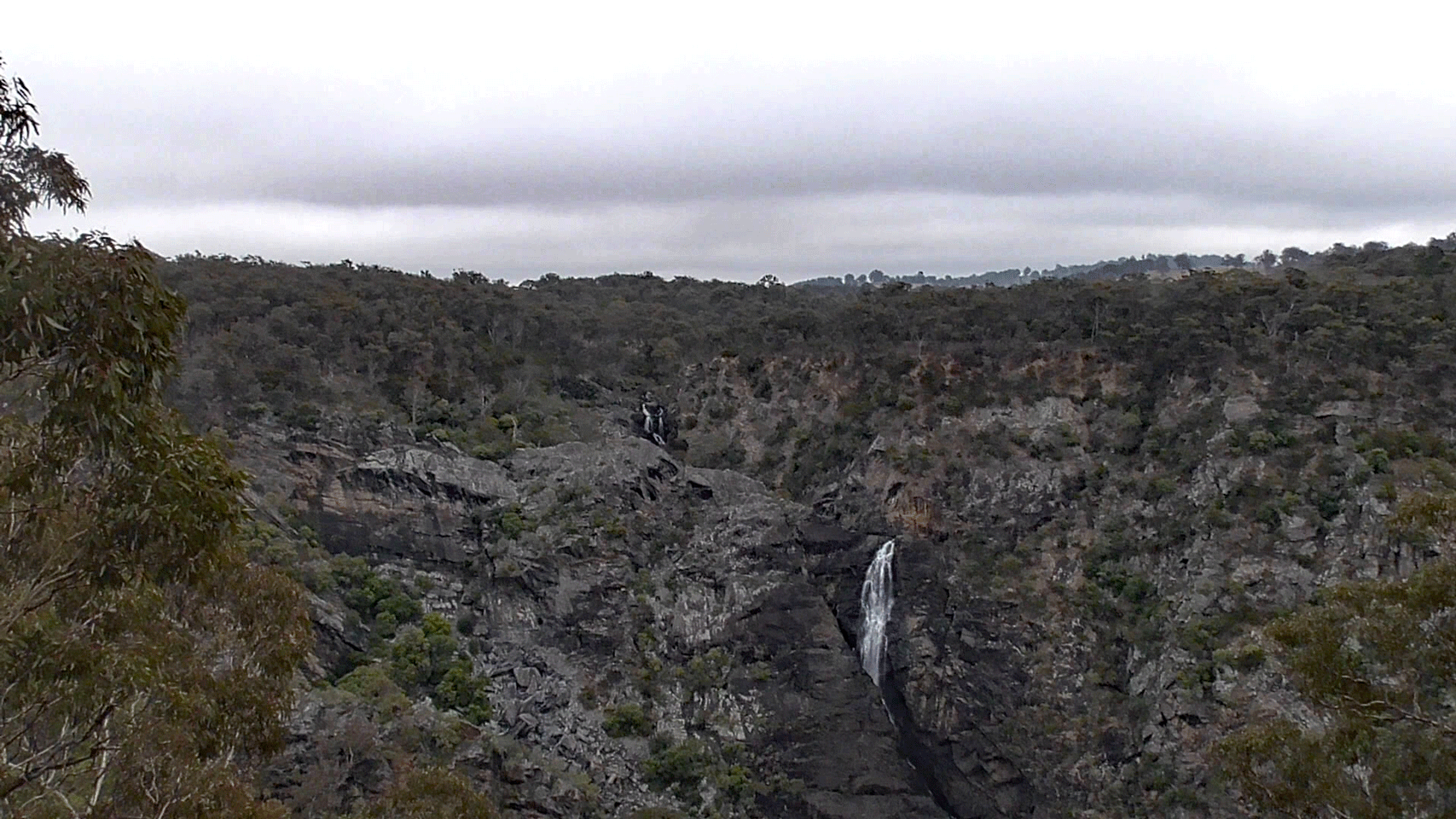
As I had come this far, I pressed on to Aspley Falls which is back toward Walcha. Dry or not, I wanted to have a look and it was well worth it. Aspley Gorge is incredible – with its 60m high almost vertical walls of slate. There is a short walk of about an hour and a longer one of a couple of hours and both of them provide stunning views of this remarkable gorge. I am definitely going back up there when there’s been more rain to see Aspley Falls in action.
Where we stayed
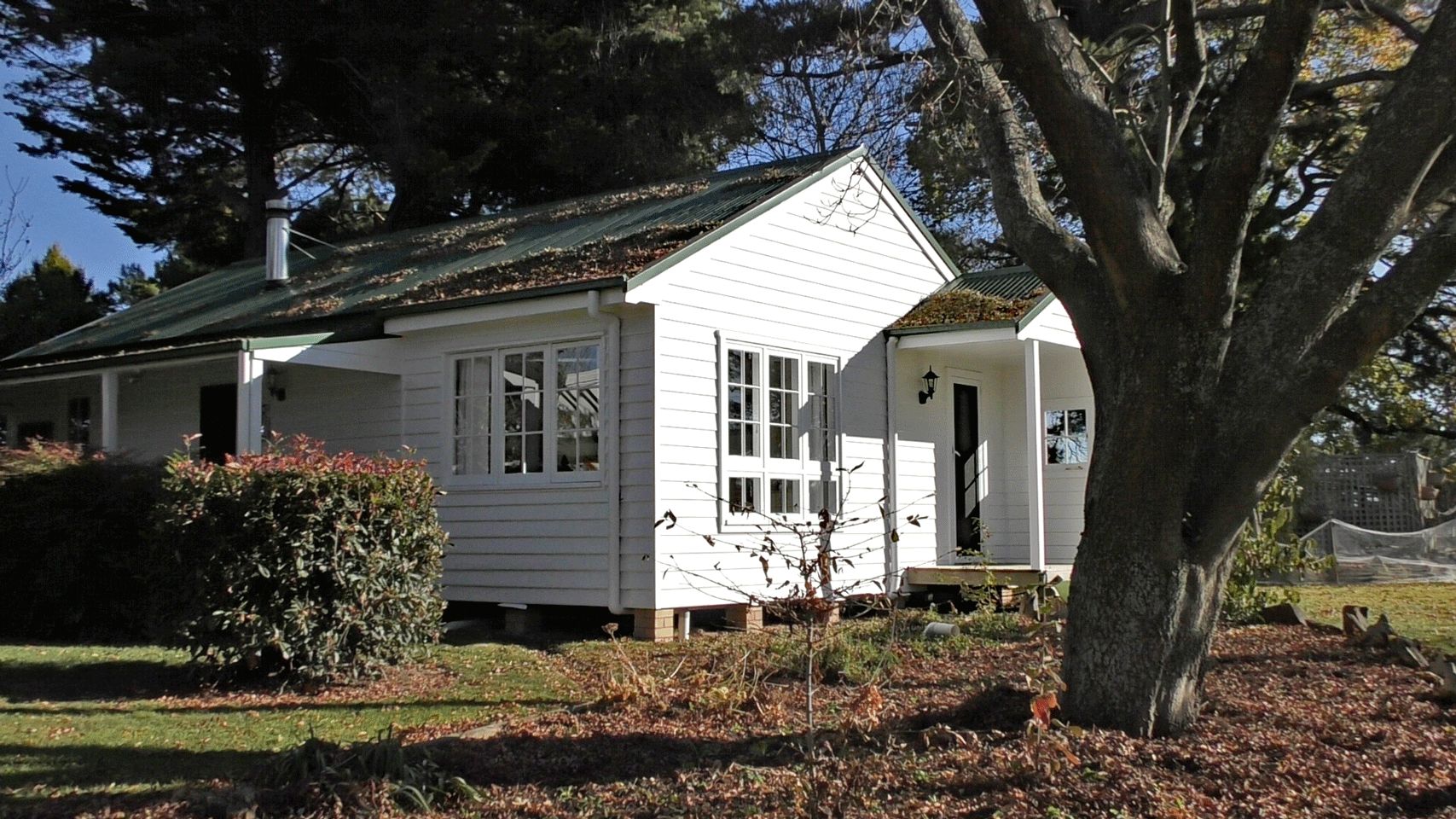
One of the highlights of this trip to Walcha was my stay at Cairnie Country Cottage. This beautifully appointed freestanding cottage is set among century old gardens just 7km out of town on a working farm. Yes, that meant driving into town, but the peace and the quiet was heaven.
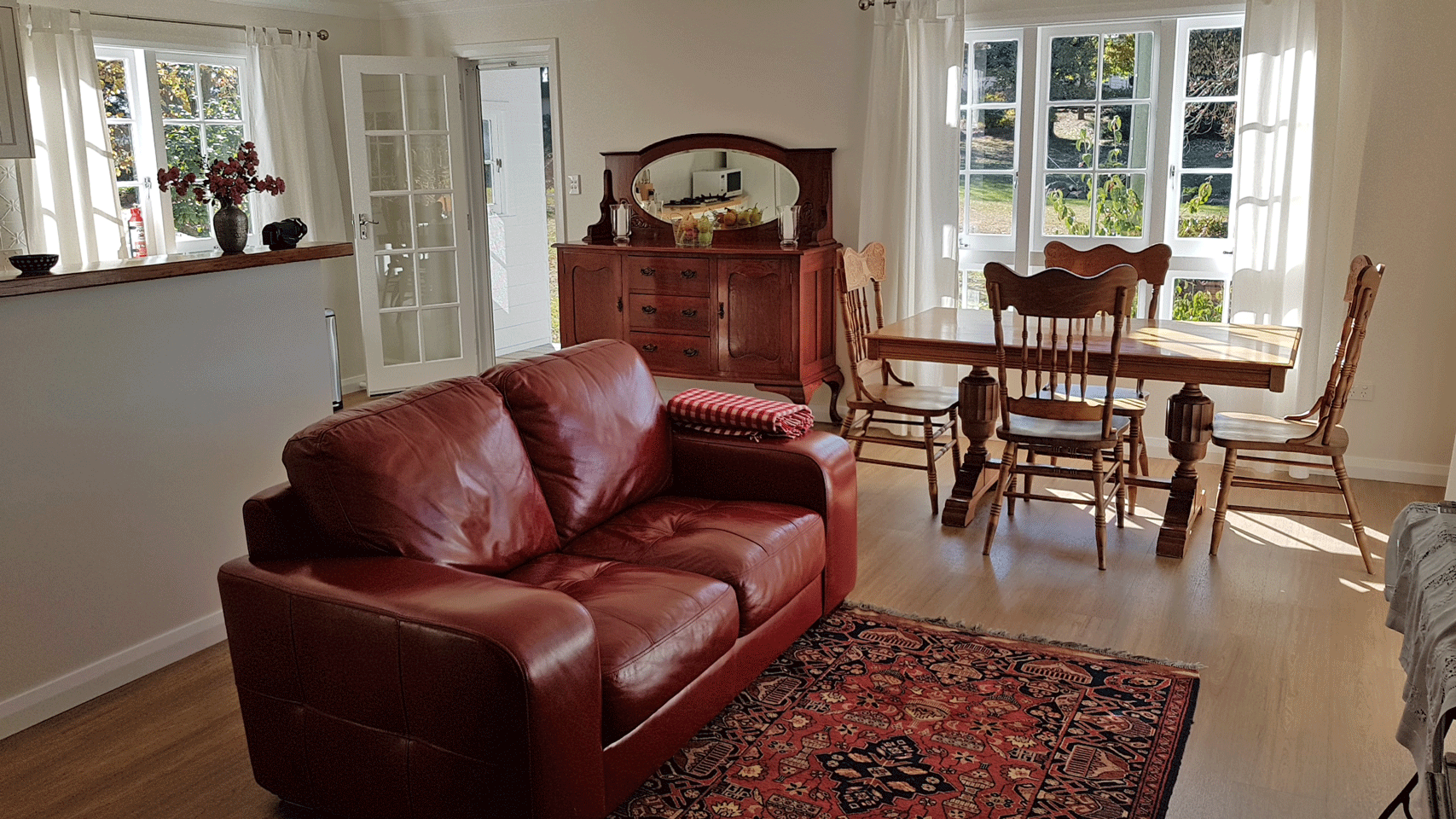
Friendly farm dogs wandered over for a pat. Chooks clucked about in fallen autumn leaves looking for tit bits. A couple of cattle wandered into the house yard at one stage to have a nibble on some shrubs and while they probably were not meant to be there, it made me smile and they didn’t stay long. Cairnie is self-catered accommodation with a modern well appointed kitchen. Bacon and eggs, butter, bread, milk and fruit juice were all there and there are two good supermarkets in town to get your other supplies. Host Jacki Fletcher had baked a jar of the most delicious home-made biscuits which were impossible to resist.
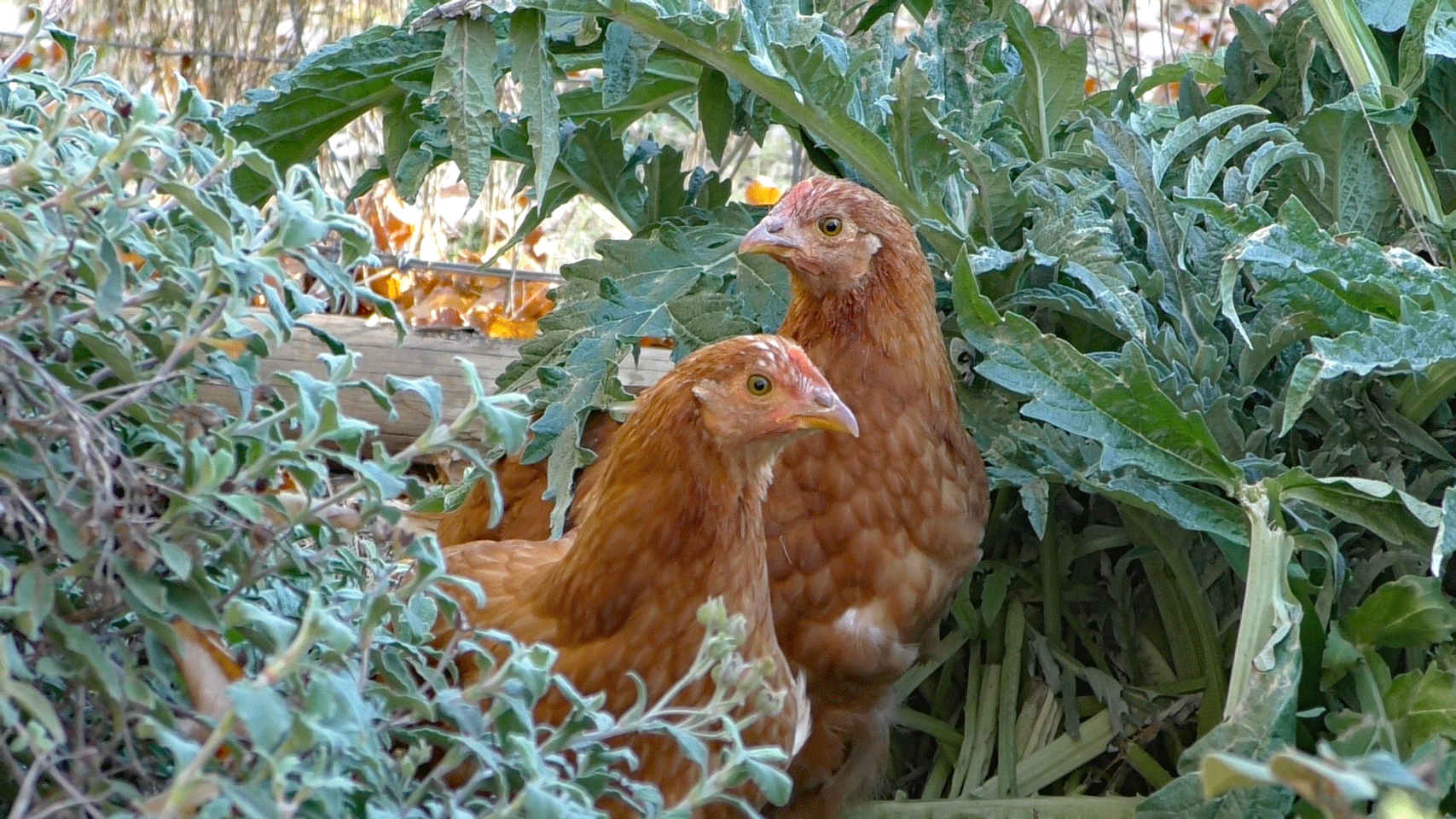
There’s a wood fire – which you need because it gets very cold overnight in autumn and winter – and it kept the cottage cosy and warm. I put my feet up on the comfy couch at the end of each day and marvelled at the quiet. You can watch TV or listen to music and mobile phone coverage was excellent. Warm and comfortable bed. Clean modern bathroom. In short. Fabulous.
Where we ate
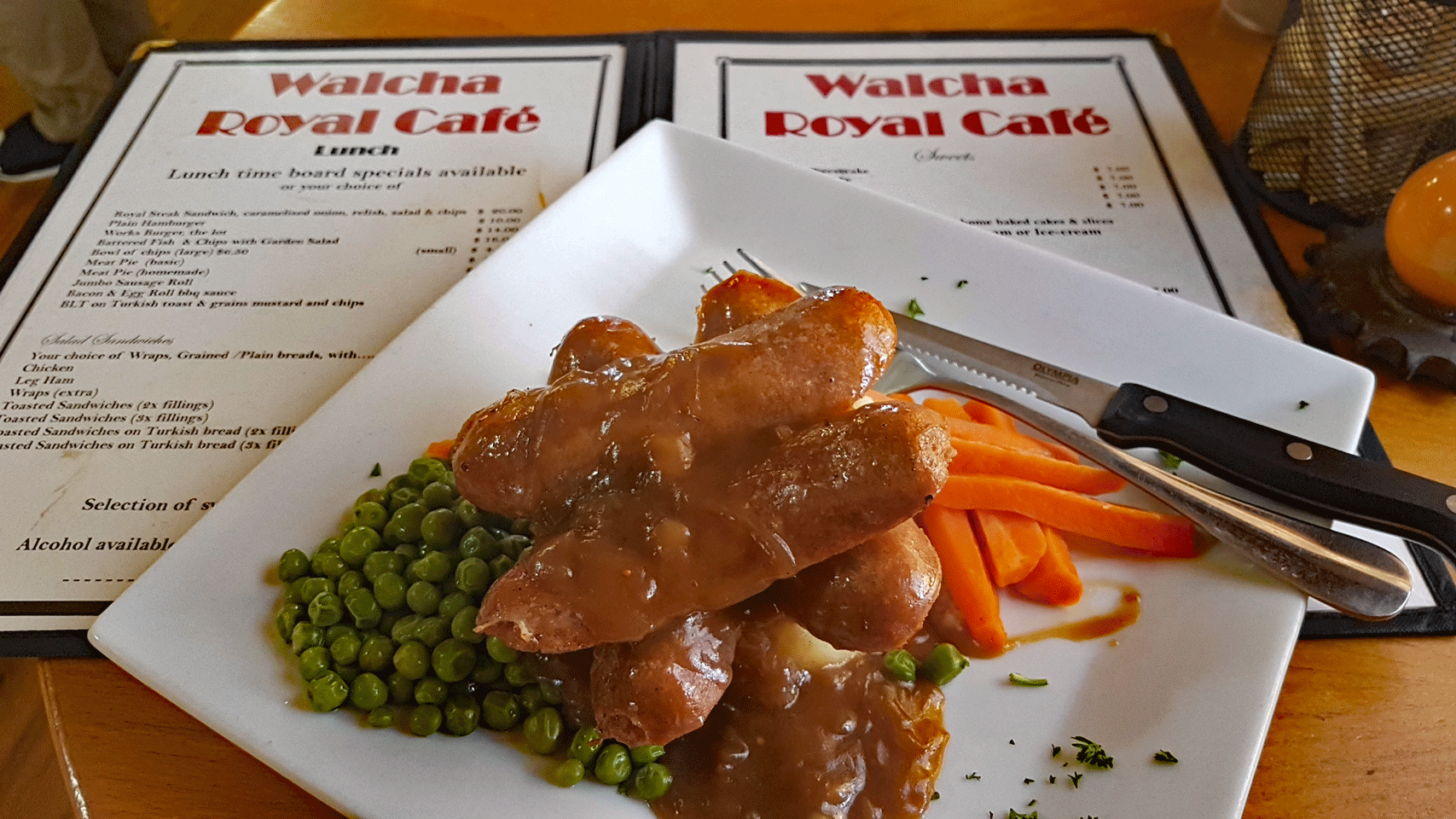
When you are staying in self catering accommodation out of town, there’s not a lot of reason to eat out for brekkie or at night – but it would have been a ten minute drive into town if I wanted to do so. Walking for hours around the town’s outdoor gallery was the perfect way to work up an appetite. I stopped for lunch at the popular Walcha Royal Cafe on the eastern side of the river in Fitzroy Street. The first Royal Hotel was built in 1889 but burned down spectacularly in 1938. The current building was built in the same year and these days is popular with motorcyclists and locals too. You can eat inside or on the veranda deck or out in the garden. It was a bangers and mash kind of day. The food was delicious and the staff were friendly. You can get a coffee and cake there too.
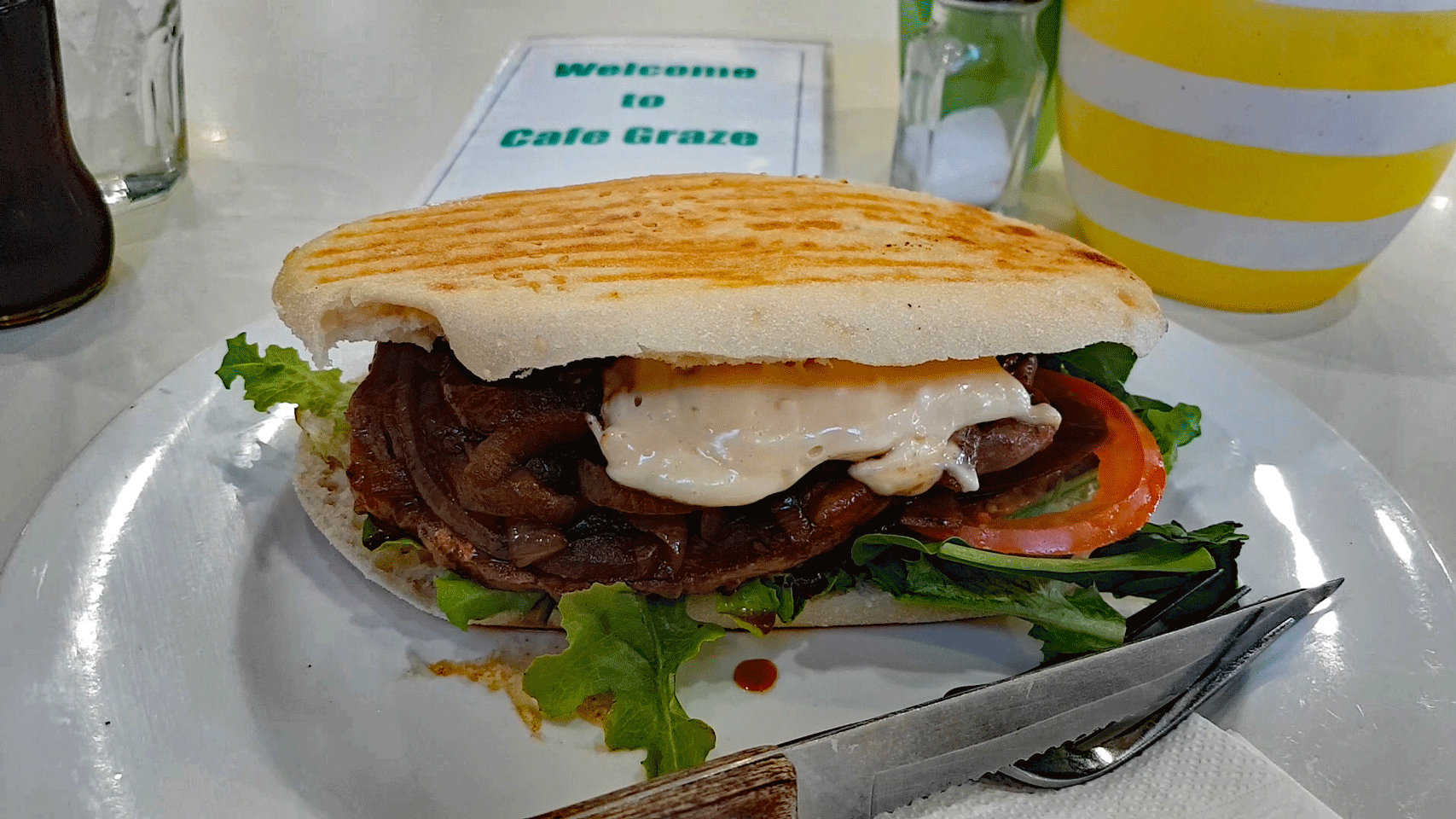
After a tiring morning looking for waterfalls, I popped in for lunch at Cafe Graze in Derby Street where I had a nice streak sandwich. The place was very busy which is always a good sign and the staff were friendly and helpful.
